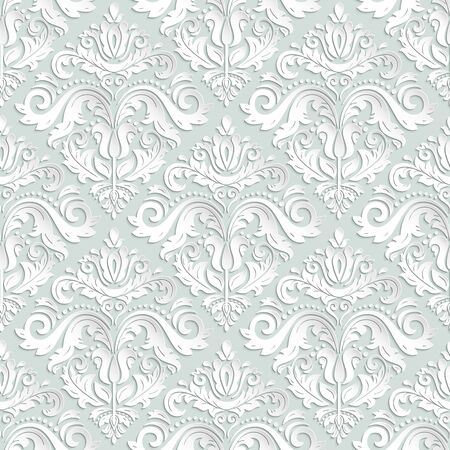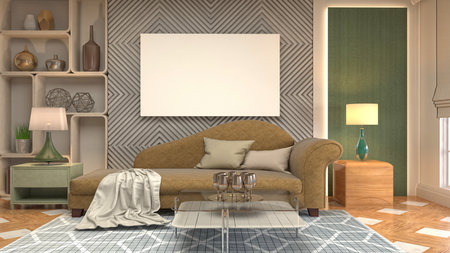Introduction to Traditional British Wallpaper Patterns
When it comes to decorating with a quintessentially British flair, few elements speak more eloquently of heritage than traditional wallpaper patterns. From the grand drawing rooms of Georgian townhouses to the cosier corners of Victorian cottages, historic wallpaper designs have played an integral role in shaping the aesthetic identity of British interiors. These enduring motifs—whether opulent damasks, whimsical florals, or evocative toile scenes—are far more than mere decoration; they are storied artefacts reflecting centuries of evolving taste and craftsmanship. To understand what truly constitutes traditional British wallpaper, it’s essential to look beyond surface beauty and delve into the cultural and historical context that has informed these beloved patterns. In this article, we set the stage for a journey through the defining characteristics and rich narratives behind iconic British wallpapers, offering inspiration and guidance for those wishing to infuse their homes with timeless elegance.
2. Damask: Aristocratic Elegance
When it comes to choosing wallpaper with traditional British patterns, few designs evoke the same sense of aristocratic elegance as damask. This time-honoured motif is synonymous with stately homes and Victorian parlours, reflecting centuries of association with luxury and refined taste in the UK.
The Origins and Evolution of Damask
Damask’s name derives from the city of Damascus, but its journey to British interiors began in the Middle Ages when it was imported as a woven silk fabric for the nobility. By the 18th and 19th centuries, advancements in textile production allowed damask patterns to flourish not only on textiles but also on wallpapers throughout Georgian, Regency, and Victorian Britain. The intricate motifs—often featuring florals, foliage, or heraldic symbols—were favoured by those wishing to display sophistication and wealth.
Damask in British Homes: A Symbol of Status
Historically, damask wallpapers adorned the walls of country manors, London townhouses, and grand drawing rooms. The pattern’s symmetrical design and subtle interplay between matt and lustrous finishes lent itself perfectly to candlelit evenings and ornate plasterwork. Its use became a visual shorthand for tradition, opulence, and enduring taste.
Key Features of Damask Wallpaper
| Feature | Description | Typical Colours |
|---|---|---|
| Motif Style | Ornate floral or botanical patterns, often symmetrical | Burgundy, gold, navy, cream, sage green |
| Texture | Slightly raised or embossed for a textile-like feel | Matte or satin finish variations |
| Cultural Association | Linked with aristocracy and heritage interiors | Traditional British palettes |
| Room Suitability | Drawing rooms, hallways, dining rooms | Makes a statement in both period and modern settings |
Damask in Contemporary British Decor
While damask remains rooted in heritage, contemporary designers have reinterpreted the motif for modern living. Today’s British homes might feature oversized patterns, unexpected colourways, or even metallic highlights—yet always with a nod to the pattern’s historical gravitas. Whether paired with antique furnishings or sleek minimalism, damask wallpaper continues to embody a quintessentially British blend of tradition and style.

3. Toile de Jouy: Rural Romance
When considering wallpaper with traditional British patterns, Toile de Jouy stands out for its storybook charm and evocative scenes. Originating in 18th-century France, this pattern features intricate pastoral vignettes—often depicting countryside life, romantic landscapes, or allegorical figures—arranged in a single colour against a light background. Though French in inception, Toile quickly captured the British imagination and found a distinct place within British interiors.
The Storytelling Detail of Toile
What makes Toile so captivating is its narrative quality. Each panel unfolds like a visual tale: picnics on sweeping lawns, shepherdesses tending their flocks, or genteel gatherings beneath ancient trees. These scenes are not merely decorative; they invite viewers into a world of rural idylls and gentle sophistication, perfectly in tune with the British appreciation for storytelling and heritage.
From Versailles to the English Countryside
The migration of Toile from French châteaux to English manor houses marks an intriguing chapter in design history. As the British aristocracy sought to emulate continental refinement during the Georgian era, they embraced Toile for its elegance yet adapted it to reflect local tastes. The motifs began to echo British landscapes and customs, blending seamlessly with the country house aesthetic.
Pastoral Charm Meets Refined Taste
In Britain, Toile wallpaper became synonymous with both rustic charm and cultivated taste. It adorned drawing rooms, bedrooms, and even grand halls—signifying not only an appreciation for natural beauty but also a nod to intellectual curiosity and travel. Today, choosing Toile for your home remains a subtle homage to this blend of romance and sophistication, making it an enduring favourite among those seeking traditional British style.
4. Chintz and Floral Motifs: The English Garden Indoors
Among traditional British wallpaper patterns, few evoke the spirit of the English countryside as effortlessly as chintz and floral motifs. These designs are more than mere decoration—they are cultural signifiers, reflecting Britain’s longstanding romance with its gardens and landscapes. The enduring appeal of floral wallpapers, especially chintz, lies in their ability to bring the outside in, transforming interiors into lush sanctuaries reminiscent of a country cottage or a stately home.
The Cottagecore Aesthetic and British Nostalgia
Chintz wallpaper is synonymous with the cottagecore aesthetic—a style movement celebrating rural life, domestic comfort, and natural beauty. Rooted in a longing for simplicity and tranquillity, cottagecore draws heavily on the visual language of vintage florals. In the British context, this means delicate roses, rambling honeysuckle, and wild primroses sprawling across walls, echoing the charm of an idyllic English garden whatever the season.
Why Florals Endure: More Than Just Pretty Patterns
The popularity of chintz can be attributed to several uniquely British sensibilities:
| Feature | Cultural Significance |
|---|---|
| Nature Reverence | Celebrates Britains gardening heritage and deep connection to the land. |
| Cosy Domesticity | Invokes feelings of warmth and homeliness—key aspects of British interior tradition. |
| Aesthetic Flexibility | Suits both grand manors and modest cottages, adapting easily to various spaces. |
| Nostalgic Value | Recalls classic literary and artistic depictions of English life—from Austen novels to Bloomsbury interiors. |
Pattern Play: Mixing Old with New
Modern interpretations of chintz often blend vintage elegance with contemporary palettes or scale, ensuring this pattern remains relevant in today’s homes. Whether paired with dark wood panelling for a heritage look or contrasted against minimalist furnishings for a quirky twist, floral wallpapers remain a beloved staple in British design. Ultimately, these motifs capture not only the lushness of an English garden but also a national affection for bringing nature into everyday living spaces—a tradition that continues to bloom.
5. Tartan, Stripes, and Plaids: Regional Identity
Among the most recognisable traditional British patterns, tartan and its close relatives—stripes and plaids—carry a powerful sense of regional identity, particularly rooted in Scottish heritage. Tartan, with its distinctive criss-crossed horizontal and vertical bands in multiple colours, is far more than a decorative motif; each pattern, or “sett,” is historically linked to specific clans, families, or regions in Scotland. In the context of wallpaper selection, incorporating tartan not only evokes a sense of tradition but also pays homage to the complexities of British social history.
Stripes and plaids, while sharing some visual characteristics with tartan, offer their own unique contributions to interior design. Striped wallpapers have long been associated with British tailoring and regimental uniforms—think of the bold lines of a cricket blazer or the subtle pinstripe of a City suit. Such patterns bring a tailored formality and a touch of nostalgia to interiors, reminding us of quintessentially British pastimes and institutions.
Choosing tartan or plaid wallpaper for a room can transform a space into a celebration of local identity. In Scotland itself, these patterns can reinforce regional pride; elsewhere in Britain, they can evoke memories of country houses, Highland adventures, and the warmth of rural retreats. The colourways—from deep forest greens to rich burgundies—often mirror the natural landscape, reinforcing that connection to place.
Tartan and stripes are also versatile: they can be used boldly on feature walls for dramatic effect or employed more subtly as accents alongside other traditional motifs such as damask or toile. This adaptability allows homeowners to curate interiors that reflect their personal ties to British heritage or simply their appreciation for timeless design elements that speak to tradition.
6. Choosing and Pairing Patterns for Modern British Homes
Blending traditional British wallpaper patterns with modern interiors is an artful exercise in balance, authenticity, and self-expression. The key is to respect the storied character of motifs like damask, toile, or chintz while introducing them into spaces that reflect contemporary lifestyles. Begin by considering the scale: classic British designs often feature intricate detail, so pairing a bold damask or William Morris-inspired print with pared-back furnishings in muted hues allows both elements to breathe. For instance, a single statement wall adorned with a heritage pattern can anchor an otherwise minimalist room, echoing the British penchant for “a touch of drama.”
When mixing patterns, stick to a cohesive palette—think Farrow & Ball’s soft greys, sage greens, or deep blues—to avoid visual overload. Layer smaller prints, such as ticking stripes or miniature florals, through textiles and accessories. This approach pays homage to English country house style, where generations have added their own layers over time. Don’t shy away from juxtaposing old and new: a Regency-style toile wallpaper can feel unexpectedly fresh when paired with mid-century furniture or contemporary artwork.
Authenticity also lies in the details. Consider classic British architectural features—picture rails, cornices, or panelled doors—and let these guide where and how you apply patterned wallpaper. Hallways and cloakrooms are particularly suited to bolder designs; these transitional spaces have long been used in Britain as areas for playful décor experiments.
Finally, characterful homes embrace imperfection. Let your choices tell a story: perhaps a hand-blocked Arts & Crafts paper in the sitting room nods to Victorian eclecticism, while a crisp geometric in the kitchen channels modern British cool. By respecting tradition yet welcoming innovation, you create interiors that are unmistakably British—layered, inviting, and full of personality.
7. Sourcing and Sustainability: Modern Considerations
When selecting wallpaper with traditional British patterns, such as damask or toile, it is increasingly important to consider not just the design itself but also where and how the wallpaper is made. In today’s market, discerning homeowners and designers are turning their attention towards reputable British makers who uphold both quality craftsmanship and ethical practices.
The Value of Homegrown Craftsmanship
Supporting local artisans and established British manufacturers ensures that you are investing in wallpapers crafted with meticulous care. Many of these companies have been operating for generations, preserving time-honoured techniques that give each roll of wallpaper a distinct character. This heritage of craftsmanship is often reflected in the depth of pattern, richness of colour, and durability—qualities synonymous with classic British interiors.
Sustainable Materials and Processes
Modern consumers are rightly concerned about the environmental impact of their choices. Many leading British wallpaper houses now prioritise sustainability, sourcing paper from responsibly managed forests and using water-based inks free from harmful chemicals. This conscious approach means you can enjoy the opulence of a flocked damask or pastoral toile while reducing your ecological footprint.
The Revival of Heritage Patterns
There has been a remarkable resurgence in the appreciation for historic patterns, with British brands delving into their archives to revive motifs that once adorned stately homes and country cottages. By choosing wallpapers from these collections, you help sustain not only traditional manufacturing but also the legacy of British decorative arts.
In summary, choosing wallpapers with traditional patterns is more than an aesthetic decision; it is an opportunity to support local craftsmanship, champion sustainability, and celebrate a living heritage within your home. By favouring reputable British makers, you ensure that your interiors reflect both timeless style and contemporary values.


